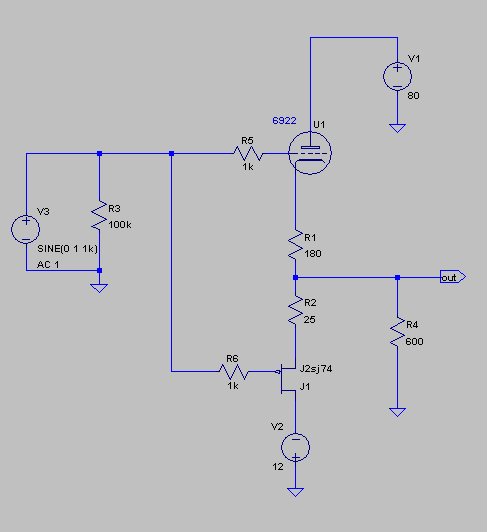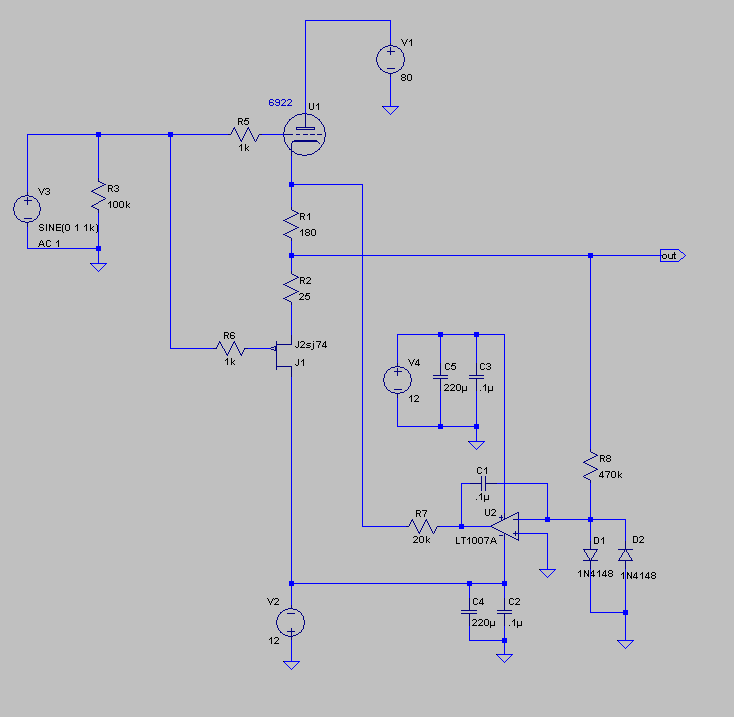 this is another quick post… just to get this into the creative commons. not that it is even worthy of a patent! but these days, there are slimebags who will do the darndest things. maybe this has been done before, but i haven’t seen it. please try it out as it works and sounds great. it is very simple. it is hybrid and therefore annoying for some… beloved for others!
this is another quick post… just to get this into the creative commons. not that it is even worthy of a patent! but these days, there are slimebags who will do the darndest things. maybe this has been done before, but i haven’t seen it. please try it out as it works and sounds great. it is very simple. it is hybrid and therefore annoying for some… beloved for others!
why does that make me so happy?
i have been periodically buffer obsessed. it is always an issue. i need a good buffer always, and tubes have trouble driving low impedances. when i say low, i mean 50 or 100 ohms to 5 volts or so. okay, yes one can parallel devices and use power tubes…. but it gets so big and bulky. and there are jobs, such as a mixing desk, where you need lots of buffers and space is at a premium. so i have tried out a lot of different things.
this one works. very nicely.
okay, some caveats: the key to making this work is degeneration. yes. the resistors in the cathode/source part of the circuit need to be adjustable so you can balance the two currents. then, they become one! yes, the tube slowly drifts as it ages… that is why a servo is a worthwhile addition. other pjfets will work well, but the resistances will have to be adjusted. basically, when the 2 null (and therefore draw the same current) you have the right values… you could use a high quality pot… a cermet trimmer with 3 to 10 turns is a good choice. it can be hard to find exactly the value you want. a 200 ohm pot would work well in this case. but you can always parallel a bigger pot with two fixed resistors… there are many ways to accomplish this job. the transconductances of the two devices can still be somewhat different so the spectrum analysis will show that some pfets are better matches for certain tubes and operating points, than others. degeneration is a way to match the gm as well as the current. clever choice of operating point is the key. using a sim, can help.
a note about servos. i am always a little creeped out by servos. but if you are into direct coupling, they are inevitably waiting for you. but where to apply the arm-bending? the input/s is the place most engineers head directly for. that creeps me out the most. i think i can hear it. at least i could in the past. i have tried lots of different methods and sometimes am forced by design to also do it like that. but often, there is a better sounding way to go. in this case, it has proven to be the tube cathode. that is what drifts… yes, the cathode is way more nitpicky than the grid, which is easy. and the opamp can’t exert nearly as much control of the low impedance cathode… but this application doesn’t require much. and the diodes and the 20k resistor limit the range of influence. a good trick is to use an ic socket for the opamp, turn on the thing without the opamp installed. adjust it for null… put the op amp in. you are done.
of course some provision for DC at the output also becomes a question, and i will take that up another time. today i just want to put this out there. i have several silbatone products that use this idea out there already, and more new stuff on the way. i think it’s time to share it.
give it a try!

